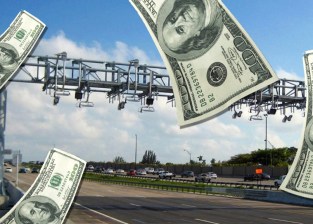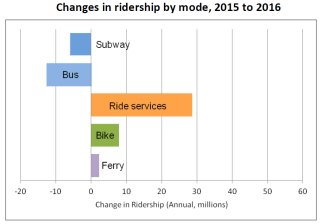Highlights of Monday’s Traffic Commission Meeting

Westchester Assemblyman Richard Brodsky’s claim that congestion pricing "smacks the middle class" was not challenged by reporters after Monday’s meeting despite a recent IBO report that says otherwise. Brodsky said a carbon tax would be fairer and praised Mayor Bloomberg for suggesting it.
Department of Transportation Deputy Commissioner Bruce Schaller has clearly been busy. At Monday’s Traffic Congestion Mitigation Commission meeting he presented more than a dozen separate congestion pricing scenarios. Having run each of them through NYMTC’s state-of-the-art regional traffic model, Schaller delivered estimates for how each of the various pricing schemes would impact total vehicle miles traveled, costs and revenue.
Commission chairman Marc Shaw introduced the day’s discussion by saying that "Everything’s still on the table" while acknowledging that some of the scenarios Schaller was modeling were "obviously controversial." Shaw also went out of his way to express disappointment that the New York Times had chosen to editorialize against the idea of East River Bridge tolls "before we’ve even had a public discussion about it."
Schaller’s Powerpoint presentation is available in its entirety below. There were a lot of numbers and transportation policy jargon but here are a few notable points:
- NYMTC’s "Best Practices Model" was updated in September of this year. The previous model, which was used to derive the transportation data for Mayor Bloomberg’s PlaNYC, was based on New York City’s 2002 mass transit network. The updated model uses the 2005 transit network. Thanks to the opening of two more subway tracks across the Manhattan Bridge and other improvements, Schaller said, "the amount of transit service has increased over the last few years," making it more attractive and feasible for motorists to switch to transit "when you apply a pricing signal." As a result, when the numbers are run through the new model, Mayor Bloomberg’s original congestion pricing plan shows an increased reduction in VMT, jumping from the intial 6.3 percent estimate to 6.7 percent. All of the data that Schaller produced for Monday’s meeting was generated using the updated model.
- The reduction in VMT produced by moving the northern boundary of the pricing zone from 86th to 60th Street is "smaller than a lot of us expected," Schaller said. While the Mayor’s original proposal produces a 6.7 percent VMT reduction and $420 million per year in net revenue, moving the border to 60th Street produces a 6.2 percent VMT drop and $387 million.
- The big news was that eliminating the "intrazonal charge," the $4 fee for driving a car inside the pricing zone, barely has any impact on VMT reduction while significantly reducing capital and operating costs. Moving the boundary to 60th Street while eliminating the intrazonal fee (and all of the technology required to make it work) would produce a 5.9 percent reduction in VMT along with $94 million less in capital costs and a whopping $135 million/year less in operating costs. Shaw was clearly intrigued by this scenario.
- Levying a $1 surcharge to motorists who aren’t using EZPass would be "an attractive thing to have whatever the final package may be," Schaller said in a rare expression of overt opinion. Processing EZ Pass vehicles is cheaper than using license plate recognition technology.
- Plain and simple East River bridge tolls — $8 flat fee, 24-hours-per-day, would reduce VMT 5.6 percent, would cost only $39 million/year to run (compared to the $229 million operating cost of the Mayor’s plan) and would raise $531 million in net revenue (versus the Mayor’s $420 million).
- Add the 60th Street cordon to the ERB tolls and use the MTA’s toll rates, $4 inbound and $4 outbound, and you’re looking at a whopping 13.4 percent projected reduction in VMT and net revenue of more than $1 billion. Upon seeing that scenario Teamsters president Gary LaBarbera reminded his fellow Commissioners, "truck traffic has to be considered seriously. You can’t put 12 yards of concrete in the subway."
- After Schaller’s presentation, Partnership for New York City president Kathy Wylde suggested that, in addition to road pricing, the Commission would need to propose some sort of "assessment" for on-street and garage parking, adding, "I think it’s pretty clear there’s a consensus here that getting rid of the intrazonal charges will result in greater revenue and greater equity" and that tolling the East River bridges would, essentially, "collect the same money from the same people but do it in a more efficient fashion."
- Shaw, who is becoming increasingly assertive in these meetings, noted that putting the fee on the bridges themselves might also allow New York City’s regional transportation agencies to more easily "coordinate all of the tolls" coming in and out of the city. "One could start to look at a way to do coordinated congestion mitigation strategies for everyone coming from all sides whether it be west of the Hudson or over the East River."


